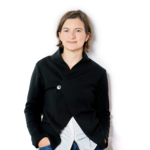Prof. Dr. Lasse Scherffig,
Interaction Design is concerned with the fabric of digital culture: from the surfaces of the screens we encounter every day to the complex networks of computational actors we are embedded in. At KISD, Interaction Design is about making and understanding interactive objects and environments. This includes an awareness of the history of the field, its roots in cybernetics and computer science and the diverse thought styles of understanding interactivity.
As a design research practice, it employs experimental approaches, qualitative research, and theoretical reflection. It considers the aesthetic and functional interrelations between code and material, analog and digital, interface and perception, paying special attention to the role of embodiment and enaction. It studies computational objects, the networked objects of the Internet of Things, space and location-based technologies, as well as the “smart” objects enabled by machine learning and artificial intelligence.
Interaction Design at KISD proposes an open-ended, experimental study of interaction that is less about optimizing user experience, and more about understanding interaction in its diverse contexts.
In the words of anthropologist and HCI pioneer Lucy Suchman: “interaction is a name for the ongoing, contingent coproduction of a shared sociomaterial world. Interactivity as engaged participation with others cannot be stipulated in advance but requires an autobiography, a presence, and a projected future. In this strong sense, I would argue, we have yet to realize the creation of an interactive machine.” (Lucy Suchman: Human-machine reconfigurations: plans and situated actions, Cambridge University Press, Cambridge, 2007, p. 23)















